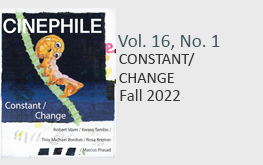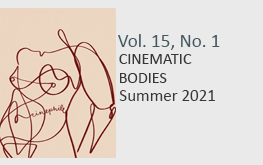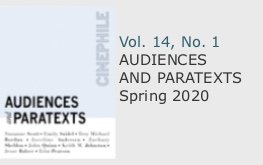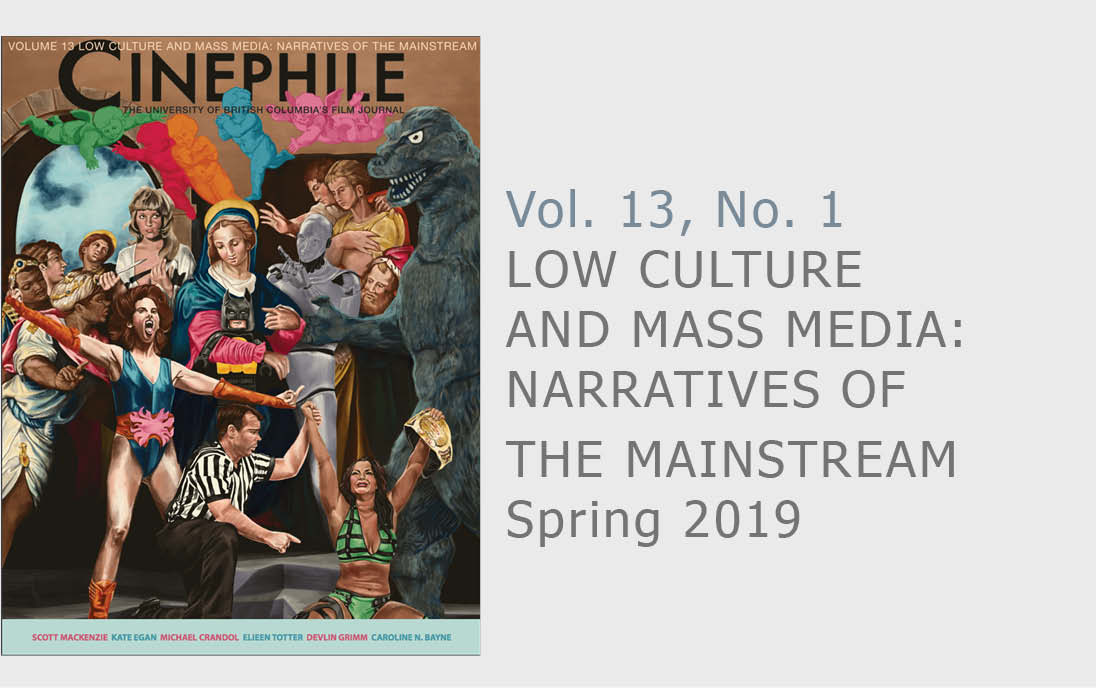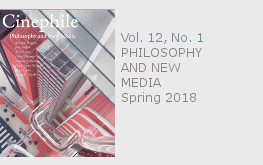Jessica Hughes
Although you may never have seen Eastern Promises (David Cronenberg, 2007) in its entirety, chances are you have seen the film’s bathhouse scene. Following its premiere at the Toronto International Film Festival, most of the attention directed at Eastern Promises was in response to the full frontal nudity and graphic violence of the film’s knife fight, which Roger Ebert suggested would become a benchmark for future fight scenes, comparing it to the standard The French Connection (William Friedkin, 1971) set for chase sequences (par. 7). While one caption for the scene posted on YouTube makes reference to Viggo Mortensen attending to his “call of duty” as an actor by shooting the entire fight sequence naked (“Eastern”), others simply warn about the “strong brutal and bloody violence,” drawing more attention to the sheer explicitness of the scene than anything else (“NUDE”). The reason the bathhouse scene is so powerful, however, has less to do with special effects or extraneous bloodshed and more to do with the impact of violence on the body in establishing the autonomy of the individual. Cronenberg portrays the heroic individual as a moral being, who offers his vulnerable naked body as proof of his loyalty to Scotland Yard. The bathhouse scene radically confronts the overwhelming ‘we’ that is set up in the prior scenes, re-examining the degree to which an individual is defined by his relationship with the group.
This concept is interrogated in Alain Badiou’s 2005 book The Century, where he examines how acts of violence are particularly significant to structured groups of people. Considering cruelty as one of the most defining aspects of the twentieth century, Badiou evaluates the effect of collective cruelty on both the perpetrators and the victim. Rather than individually dealing with conflict, hostile acts are executed by large numbers of people because it is unlikely that, in placing the blame, an individual will be singled out of an entire group. Using an excerpt from Bertolt Brecht’s The Decision, Badiou examines how the Communist Party relies on the absolute devotion of the members to the group. Brecht’s play focuses on a band of Communist militants awaiting their opportunity to organize the workers in pre-Communist China. When one of the young members insists (prematurely) that the Party take action, he puts their lives and mission in jeopardy. Thus he is forced to sacrifice not only his membership in the group, but also his own life. Badiou’s reading of this focuses on the union of the individual and the collective, using the terms ‘I’ and ‘we’ to draw attention to the way the two work together rather than functioning in and of themselves. It is vital that the young Comrade in The Decision express his ‘I’ in terms of a radical commitment to the Idea, but it is equally vital that the ‘we’ act cohesively. He cannot be an individual without defining himself by his relationship to the group, but, at the same time, he is unable to be a member of the group without considering its effect on him as a single entity. The Real-as horrifically expressed by the Comrades slaying the young man and throwing his body face-down into a pit of lime-is the tragic and ‘cruel’ cost effected on the individual in service of a higher principle. In this case, the Idea is less about Communism than the radical commitment of the collective, whose passion for the Real will tolerate terrible and spectacular acts of cruelty; the needs of the many outweigh the needs of the few.
In Eastern Promises, Nikolai (Viggo Mortensen) is similarly caught between the ‘I’ and the ‘we’ in his relationship with both Scotland Yard and the Russian mafia. Both groups offer a sense of belonging that is Nikolai’s reality, making him unable to exist as an individual without also being part of the group. But, the maintenance of the ‘I’ within the inseparable ‘we’ calls attention to Badiou’s representation of the collective as a contradictory relationship between the group and the individual: “The demand of the ‘we’ […] appears as a demand for inseparateness.” Rather than insisting on a complete transformation of the ‘I’ into the ‘we’, Badiou suggests it is more important for “the ‘I’ to abide within the ‘we’ in an inseparate form” so as to highlight the individual’s existence within the group (122). In accordance with this, rather than wholly submitting himself to either group, Nikolai maintains his sense of ‘I’ as a part of the ‘we’ in order to reinforce his role as a supporter of the greater Idea. Just as the relationship between the young Comrade and the Communist Party suggests in The Decision, the obligation for a permanent bond between members of the vory v zakone in Eastern Promises is so strong that if one were to expose himself as an outsider, it would be necessary to eliminate that person altogether. With this in mind, Nikolai takes advantage of the conformity expected from members of the mob and works his way to the top by means of forged loyalty.
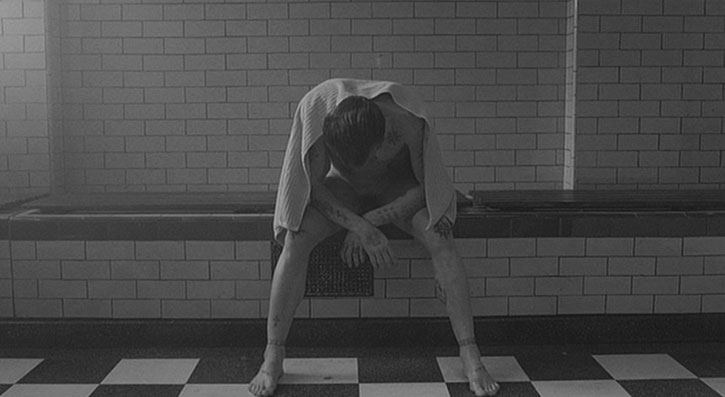
The film opens with a murder arranged by Kirill (Vincent Cassel), the son of a Russian mafia leader in London, Semyon (Armin Mueller-Stahl). To dispose of the bloody corpse, Kirill calls in Nikolai, whom we learn is both Kirill’s driver and ‘undertaker’. Later in the film, however, when Nikolai is shown relaying his life story to the senior members of the vory v zakone (literally, “thieves by the code”), it becomes clear that he is a greater asset to Semyon’s family. His interview with the head members of the gang is followed by the tattooing of three stars on his body: two on either side of his heart and one on his knee. These stars signify his acceptance into the family, a decision based on his perceived devotion to the group as well as his criminal past-as illustrated by the array of Siberian prison tattoos already adorning his body. After he passes this physical examination, Nikolai is elevated to the same status as Kirill within the hierarchy of the mob family. However, this promotion turns out to be a ploy arranged by Semyon to save his son’s reputation. Two scenes later, Nikolai meets Azim (Mina E. Mina), a member from a rival faction, at the local bathhouse, for a meeting arranged by both the family that has taken him in and the rival Chechen family, who believe he is Kirill. Leaving Nikolai in the bathhouse, Azim tells two other men that ‘Kirill’ is waiting for them and they will recognize him by his vory v zakone tattoos. The two men enter the steam room and brutally attack Nikolai, who, naked and unarmed, appears completely vulnerable, though his self-defense skills quickly counter this impression.
The details of this scene draw attention to the way Eastern Promises portrays the relationship between appearance, truth, and the figure of the Real. The preceding scenes suggest Nikolai is accepted into the family because they value his dedication, but the bathhouse scene proves otherwise. The reliance on group membership is emphasized here by the fact that, in a group with distinctive traits, such as the tattoos of the Russian mafia, members are distinguishable by their ranking, rather than as individuals. Thus, Nikolai can easily be mistaken for Kirill because they have the same markings on their bodies, which declare not only their membership and position in the group but also their absolute loyalty. Semyon exploits this loyalty to the collective in order to maintain control-without the cooperation of the members, he would be unable to uphold his rule.
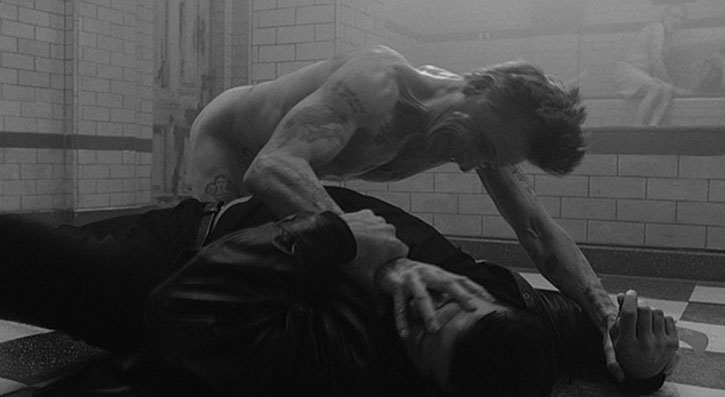
Although having the appropriate tattoos confirms Nikolai’s acceptance within the vory v zakone, it is also what betrays him to the attackers. The Real is presented here as the result of preconceived expectations of defining characteristics associated with groups rather than individuals. Nikolai’s connection to Kirill as a friend, brother, and guardian is enough to make him pass as the real Kirill, regardless of any other facts that might suggest otherwise. The film offers very little confirmed background information about Nikolai prior to the knife fight, so having the tattoos, and the consequential cuts on his body, confirm his association with Kirill and Semyon. Paradoxically, the ensuing gashes and bruises inflicted on Nikolai’s body satisfy a Badiouian passion for the Real, which convinces all parties, and the audience as well, of a loyalty paid for in blood. It is significant that the revelation that Nikolai is working for Scotland Yard succeeds the bathhouse scene, emphasizing how he has consciously risked his safety as an individual for the benefit of the group. In this sense, the damage done to the body is ultimately the cost of belonging to a collective and Nikolai is presented as the heroic figure. The passion for the Real is here expressed by the graphic violence of the bathhouse scene. Simultaneously, the scene forces the viewers to consider the implications of Nikolai’s naked and tattooed body-which at once marks him as part of a group, while, at the same time, renders him vulnerable and exposed, an individual struggling for his own survival.
While the power of the collective is emphasized here, on a deeper level it also reveals how being a member of a group can be used to advance one’s position as an individual. Rather than devoting himself entirely to one group, Nikolai pledges his allegiance to both the vory v zakone and Scotland Yard by offering portions of his individuality to each. In the process, however, he is forced to come to terms with the cruelty he has become tied to by association. In his study of how violent acts are influenced by other people and events, historian and philosopher Rene Girard observes: “[m]en cannot confront the naked truth of their own violence without the risk of abandoning themselves to it entirely” (87). Rather than openly accepting our roles as individuals, Girard suggests that it is easier to attribute our violent tendencies to some kind of collective bond by joining forces with other individuals who are likely to issue the same kind of reactions. This allows us to incorporate cruelty into our lives without accepting personal responsibility for it. The violence Nikolai partakes in is similarly justified by his ties to a greater cause-Scotland Yard’s effort to reduce crime by bringing down the Russian mob.
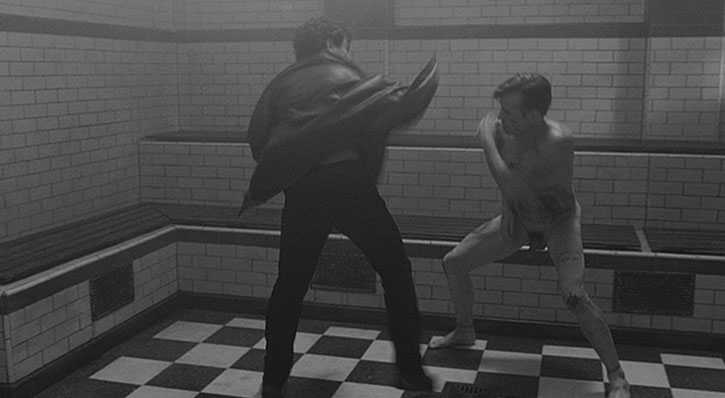
Complications arise, however, with the realization that the Russian mob is comprised of smaller factions, each with their own causes. The relationship between the two groups belonging to the vory v zakone is therefore defined by their collective interactions, rather than individual ones, with the battle for power prevailing beyond any common causes that may exist otherwise. Although it is Kirill who specifically calls for the death of a Chechen man, other members of the group, by affiliation, take part in the murder, and all are subject to the repercussions. Kirill’s dependence on collective support ties him to the other members of the vory v zakone who defend him, which brings us back to the bathhouse scene, where the bloody consequence of his murder in the name of the ‘we’ gets directly thrust upon the naked and unsuspecting ‘I’. As Nikolai sits alone, waiting for Azim to return, two men in suits approach him. Seconds later, the first attack is made, and, throughout the rest of the scene, the camera remains tightly focused on Nikolai’s naked body, with close attention to the slashes made in his skin, followed by his quick and powerful reactions. The bloody close-ups of his defense continue for close to three minutes before he is able to defeat the Chechens and escape from the bathhouse. The next scene cuts to a wounded Nikolai, alone, being pushed through a corridor on a hospital bed.
The separation between the collective violence portrayed in the film prior to the bathhouse scene and the focus on the individual that scarcely comes into play earlier on is very much defined by these attacks. One of the key contradictions of the Russian mafia in this film is that the violence directed toward Nikolai in the bathhouse scene shows he has only been accepted as a part of the group so they can eliminate him in place of another, more valuable, member. Rather than lose Kirill, who has invested himself in the group, Semyon chooses to sacrifice the newcomer, whose ties are less secure. As a result, Nikolai is subjected to twice the violence because he is simultaneously an insider and an outsider. While this reinforces his assumed identity, so he can maintain his sense of ‘I’ while still being a part of the group, it is not clear at this point in the film how this is advantageous to him. However, the transition between the bathhouse scene and the subsequent revelation shows how Nikolai has studied the roles he must play in order to be a member of Scotland Yard and the vory v zakone, by allowing his ‘I’ to become a part of the inseparate ‘we’. Similarly, Kirill’s attempt to play the role of a mafia leader’s son, by killing other members of the group to prove his own power and using prostitutes to maintain some facade of heterosexuality, emphasizes the significance of using the ‘we’ to preserve an assumed image of the ‘I’.

The significance of role playing and identity is at the forefront of Eastern Promises‘s key themes because of the emphasis on its characters as immigrants to the United Kingdom. Cronenberg investigates the importance of group membership for the Russians in various ways, not only through the portrayal of the vory v zakone, but also with the story of Anna (Naomi Watts) and her family, as well as the narration of Tatiana’s (Tatiana Maslany) journal, which plays a significant role in the film’s examination of the outsider’s quest for belonging. Although Anna was born in London, she attempts to relate to her Russian heritage by getting involved in the mystery of Tatiana and her baby. This connection is essential for understanding how group violence occurs in different classes and social enclaves. In addition to Tatiana’s association with the vory v zakone’s illegal business of importing Russian women to London for the sex trade, Anna’s visits to Semyon’s house reflect her desire to be included in the group of Russian expatriates of which she believes he is a part. Further, the appeal of being a member of a group associated with a given cultural circle is what brings the vory v zakone together within the film. The ‘we’ provided by the collective support of joining together is particularly attractive to this circle because most members have already given up their individuality in their struggle to fit in, even as outsiders. Yet, the constant unease felt by those caught between the ‘I’ and the ‘we’, leads to a form of violence echoing Badiou’s proposal that “[t]he idea that the only real body is the tortured body, the body dismembered by the real, is a terrifying but ancient one.” By committing crime as a collective, they are able to accept the reality of their lives in London, with faith in the fact that “the wound is what testifies to the body’s exposure to the real,” providing this desired sense of belonging (116). The stab wounds Nikolai receives in the knife fight with the Chechens confirm his relationship with the Russian mafia and his existence as an expatriate in London.
Eastern Promises offers a closer look at the purpose of this reliance on the collective by reconsidering the individual intentions of group members. The film examines family relations in an inter-cultural context, while ultimately suggesting that neither familial nor cultural ties are a means to an end when it comes to improving one’s status. The context of the Russians and Chechens living in London draws attention to the immigrant experience and the necessity for belonging, which also offers significant insight into the search for identity connected to the desire to be part of a group. Yet, it is through the aggressive turn of events in the bathhouse scene that Cronenberg is able to more directly explore the relationship between group members, where neither fraternal relations nor sworn oaths seem to hold any value. By temporarily dislocating the audience’s sense of family values and trust, Cronenberg draws attention to the way groups of people join together to carry out acts of violence in service of upholding the collective. In the end, though Nikolai is able to reclaim his ‘I’ from both the vory v zakone and Scotland Yard, the film encourages the viewer to consider how, in support of an Idea, we must not only offer our individuality, but our Real flesh and blood.
Works Cited
Badiou, Alain. The Century. Cambridge: Polity Press, 2007.
Brecht, Bertolt. The Decision. Brecht Collected Plays: Three. Ed. and trans. John Willett. London: Methuen, 1997. 61-91.
Ebert, Roger. “Eastern Promises.” Rogerebert.com. 14 Sept. 2007 9 Aug. 2009. <http://rogerebert.suntimes.com/apps/pbcs.dll/articleAID=/20070913/REVIEWS/709130303/1023>.
Girard, Rene. Violence and the Sacred. Continuum International Publishing Group, 2005.
“Viggo Mortensen in Eastern Promises.” YouTube. 11 Mar. 2008. 26 Aug. 2009. <http://www.youtube.com/watch?v=32I-Nx0hdTw&feature=PlayList&p=71695D12734BBBCF&playnext=1&playnext_from=PL&index=6 >.
“VIGGO MORTENSEN NUDE DURING FIGHT SCENE.” YouTube. 24 Feb. 2008. 26 Aug. 2009. <http://www.youtube.com/watch?v=QRkwnFxwYfo&feature=fvw >.


